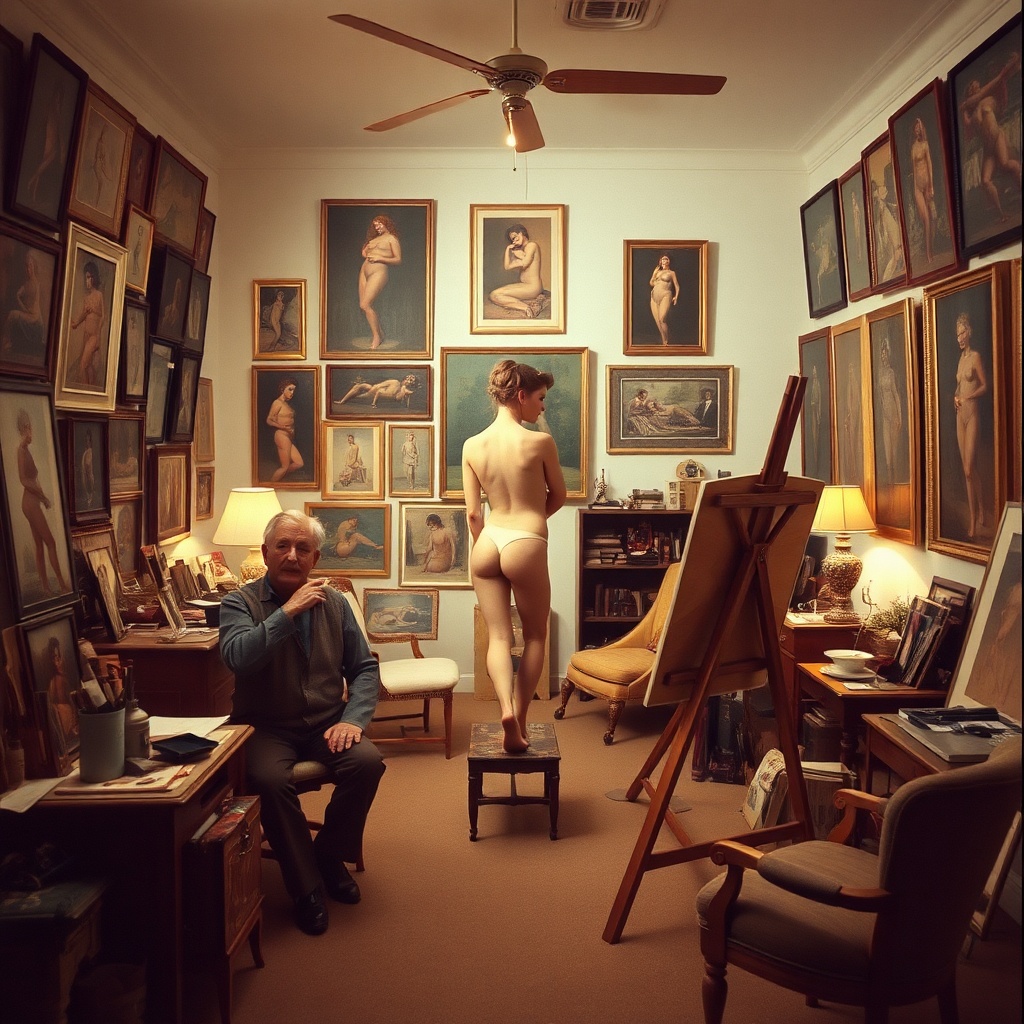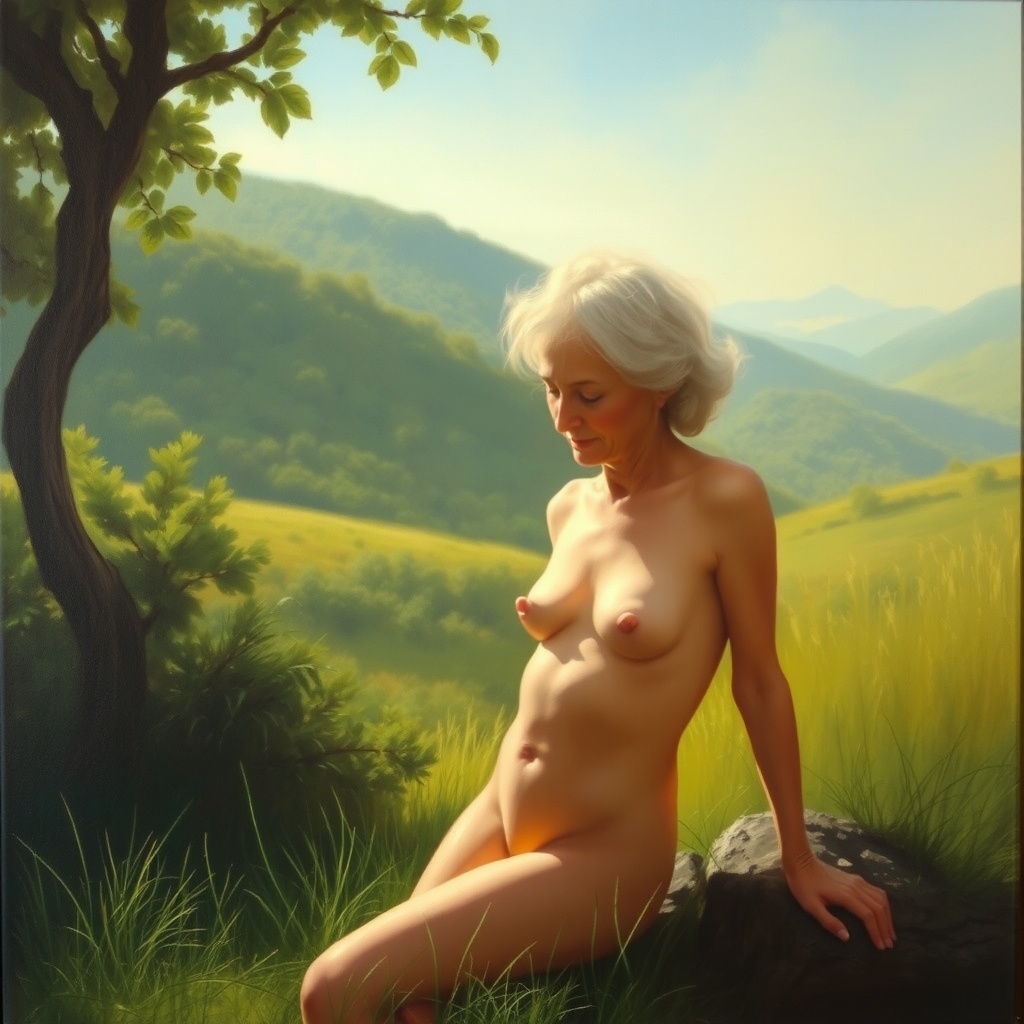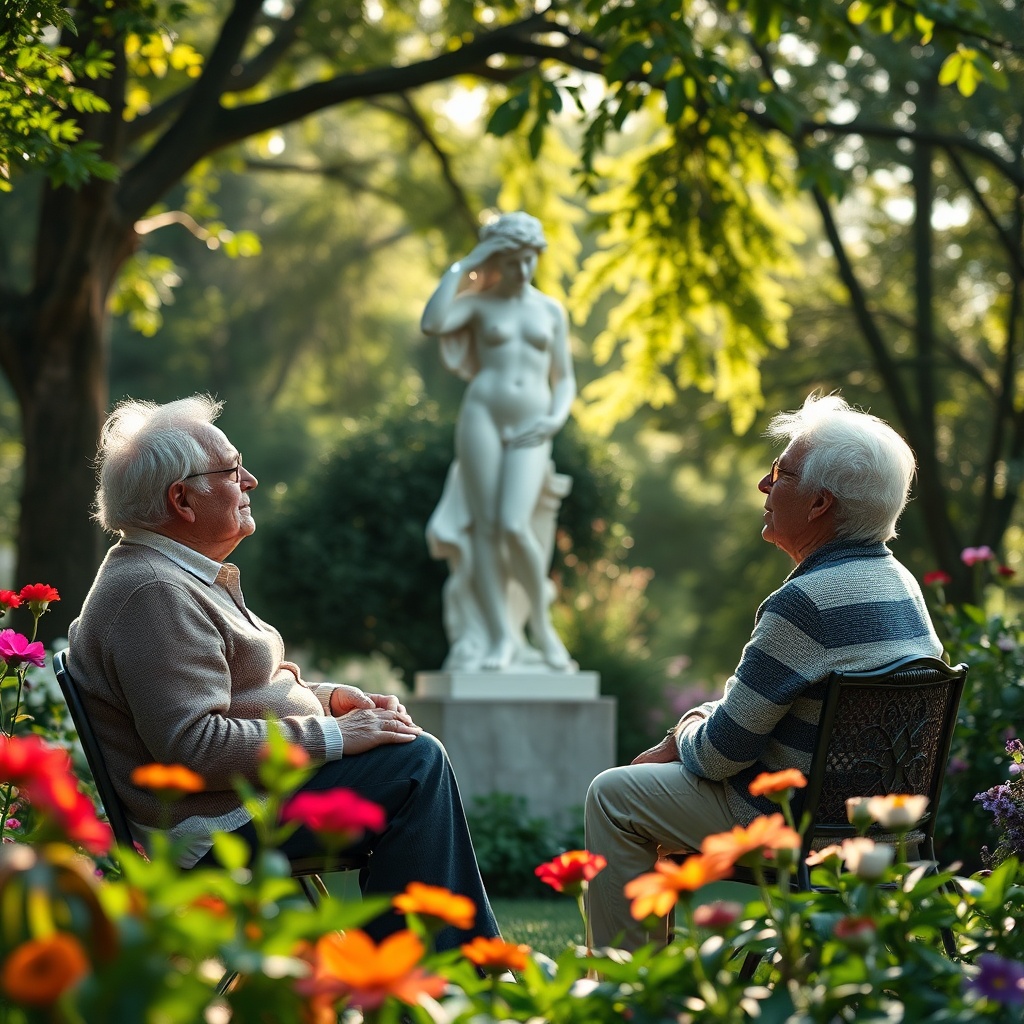Rediscovering the Allure: A Journey Through 1960s Nude Art

Introduction to 1960s Nude Art
Welcome to a captivating exploration of 1960s nude art, a decade that celebrated the human form with remarkable boldness and elegance. This era was marked by vibrant artistic expression, reflecting cultural shifts and the quest for freedom. Let’s embark on a journey to rediscover the allure of nude art from this iconic time.
The Cultural Landscape of the 1960s
The 1960s were a period of profound change. As traditional values were challenged, artists began to embrace themes of liberation, identity, and sensuality.
- Art Movements: Abstract Expressionism, Pop Art, and Minimalism emerged, influencing how the human body was portrayed.
- Social Changes: The sexual revolution and feminist movements prompted a reevaluation of the body in art.
Iconic Artists and Their Works
Several artists rose to prominence during this era, each bringing a unique perspective to nude art:
| Artist | Notable Work | Style |
|---|---|---|
| Lucian Freud | Benefits Supervisor Sleeping | Figurative |
| Andy Warhol | Marilyn Diptych | Pop Art |
| Richard Avedon | In the American West | Photography |
Elements of 1960s Nude Art
Artists of the 1960s utilized various elements to convey the beauty and complexity of the human body:
- Color: Bright, bold colors contrasted with soft, muted tones to create emotional depth.
- Form: Focus on the organic shapes of the body, often celebrating imperfections.
- Context: Settings varied from intimate interiors to grand outdoor landscapes, enhancing the narrative of the artwork.
The Reception of Nude Art
During the 1960s, nude art often sparked debate:
- Criticism: Some viewed it as provocative or inappropriate, while others praised its honesty and realism.
- Legacy: Many works from this era are now celebrated as masterpieces, influencing contemporary artists.
Interactive Reflection
As we reflect on the bold elegance of 1960s nude art, consider these questions:
- What emotions do these artworks evoke for you?
- How do you perceive the relationship between art and the human body?
- Can you recall any personal experiences that resonate with the themes of freedom and expression in this art?
The 1960s nude art scene was a vibrant tapestry of emotions, ideas, and bold expressions. By rediscovering these works, we not only celebrate the beauty of the human form but also the cultural shifts that shaped our understanding of art and society. Let this journey inspire your appreciation of timeless beauty and elegance.
The Artistic Revolution: How 1960s Nude Art Redefined Beauty

The Artistic Shift
The 1960s was a decade marked by profound changes in society, culture, and art. The emergence of nude art during this period was not merely an aesthetic choice; it represented a bold statement about the human form and its place in society. Artists began to explore the boundaries of beauty, challenging traditional norms and inviting viewers to reconsider their perceptions.
Breaking Conventions
In contrast to the often idealized and overly romanticized depictions of the human body in previous eras, the nude art of the 1960s embraced a more raw and authentic representation. Artists like Lucian Freud and Henry Moore portrayed the human body in ways that were unvarnished and honest, showcasing imperfections and celebrating individuality.
Embracing the Body
This era’s nude art was not just about nudity; it was a celebration of the human experience. The body was viewed as a canvas of emotions, stories, and histories. Artists used the nude form to express themes of vulnerability, strength, and intimacy. The brush strokes and forms became a dialogue between the artist and the viewer, inviting a deeper exploration of what beauty truly means.
Influence of Feminism
The feminist movement also played a critical role in redefining beauty standards during the 1960s. Artists like Judy Chicago and Carolee Schneemann used nude art to challenge societal expectations and to reclaim the female body. They articulated powerful messages about autonomy, empowerment, and self-acceptance, urging viewers to see beauty beyond the surface.
Take a moment to reflect: How do you perceive beauty? Is it a fixed standard, or is it fluid and personal? This question was at the heart of the artistic revolution in the 1960s, prompting individuals to embrace their own definitions of beauty.
Legacy of 1960s Nude Art
The legacy of 1960s nude art continues to influence contemporary artists today. Its revolutionary spirit paved the way for a more inclusive and diverse representation of beauty in art. The dialogue it sparked remains relevant, encouraging ongoing conversations about body image, identity, and the nature of art itself.
Embodying Freedom: The Cultural Impact of Nude Art in the 1960s

Exploring the 1960s Artistic Landscape
As we journey back to the 1960s, let’s immerse ourselves in the vibrant world of art that flourished during this transformative decade. The emergence of nude art was not merely an aesthetic choice; it was a bold statement of freedom and self-expression. In this era, artists began to challenge traditional norms and conventions, inviting viewers to reconsider their perceptions of the human form.
The Rebellion Against Conformity
The 1960s were marked by significant social upheaval, with movements advocating for civil rights, women’s liberation, and sexual freedom. Artists such as Lucian Freud, Alfred Leslie, and Andy Warhol explored the nude form as a canvas for expressing these revolutionary ideas. Can you recall how these movements influenced your own views on art and freedom?
Nude Art as a Reflection of Society
During this time, nude art served as a mirror reflecting the shifting societal values. It became a medium through which artists could examine themes of identity, vulnerability, and empowerment. The depiction of the nude body was no longer confined to the realms of mythology or romanticism; it became a personal and political statement. Take a moment to reflect: how do you think society’s views on the human body have evolved since then?
The Role of Feminism in Nude Art
The feminist movement played a crucial role in shaping the nude art of the 1960s. Women artists such as Judy Chicago and Carolee Schneemann began to reclaim the nude form, asserting their agency in a male-dominated art world. Their works challenged the traditional portrayals of women in art. Consider how this shift might have empowered you or those around you at the time.
Audience Interaction: Your Perspective
- What are your thoughts on the portrayal of nudity in art? Do you see it as a form of liberation or something else?
- How has your understanding of the human body in art changed over the years? Reflect on the journey of art from the 1960s to today.
Conclusion: The Lasting Legacy
The legacy of 1960s nude art extends far beyond the canvas. It embodies a spirit of freedom that continues to resonate today. As we celebrate this bold elegance, let’s appreciate how these artistic expressions have paved the way for future generations to explore their own identities. What sentiments do you carry from this era of art? How do they shape your view of contemporary art today?
Timeless Figures: Iconic Artists Who Shaped 1960s Nude Art
The 1960s was a transformative decade for art, particularly in the realm of nude art. This era witnessed a bold exploration of the human form, influenced by cultural shifts, societal changes, and a desire for artistic freedom. In this interactive journey, we will delve into the lives and works of iconic artists who left an indelible mark on 1960s nude art.
Key Artists and Their Impact
Explore the unique contributions of the following artists who not only shaped the aesthetic of nude art but also challenged societal norms:
- Lucian Freud
- Signature Style: Known for his raw and intense portrayals of the human body.
- Notable Work: Benefits Supervisor Sleeping, a masterpiece that captures the unvarnished reality of the human experience.
- Andy Warhol
- Signature Style: A pioneer of pop art, his work often included nudes in a commercialized context.
- Notable Work: Marilyn Diptych, where the iconic image of Marilyn Monroe intertwines with themes of sexuality and celebrity.
- Henry Moore
- Signature Style: Renowned for his abstract sculptures that celebrate the human form.
- Notable Work: Reclining Figure, a series that highlights the elegance of the nude in a three-dimensional space.
- Robert Rauschenberg
- Signature Style: His works combined painting and sculpture, often featuring the nude in unexpected contexts.
- Notable Work: Erased de Kooning Drawing, although not a nude, exemplifies the radical approach to art that influenced the depiction of the human form.
The Cultural Context
The 1960s was marked by significant cultural upheaval. The sexual revolution, feminist movements, and a shift towards greater individual expression played crucial roles in how artists approached the theme of nudity. The nude became a symbol of liberation, vulnerability, and strength.
Interactive Elements
To engage with the art of the 1960s, consider the following activities:
- Visit Art Galleries: Many galleries feature exhibitions focused on 1960s art. Look for pieces by the artists mentioned above.
- Art Discussions: Join or initiate discussions about the significance of nude art in the 1960s and its lasting impact today.
- Create Your Own Art: Experiment with drawing or painting nudes, reflecting on how your own experiences shape your interpretation.
The bold elegance of 1960s nude art continues to resonate today, reminding us of the power of the human form and the artists who dared to explore it. Through their innovative approaches, these iconic figures not only shaped art but also influenced societal perceptions of beauty and vulnerability.
The Sensual Brushstroke: Techniques That Captured the Essence of the Era
Exploring the Artistry of the 1960s
The 1960s was a significant period for art, particularly in the realm of nude art. Artists of this era utilized various techniques that not only highlighted the human form but also conveyed deep emotional and cultural narratives. Let’s delve into the engaging brushstrokes and methods that characterized this distinctive period.
Key Techniques Used in 1960s Nude Art
- Expressive Brushwork: Artists often employed bold, sweeping strokes that conveyed movement and emotion. This technique allowed for a dynamic representation of the human body.
- Color Palette: The use of vibrant colors was prevalent. Bright hues were applied not just to represent skin tones but to evoke feelings and themes of freedom and sensuality.
- Layering: Many artists used layering techniques to create depth. This method added dimension to the figures, making them appear more lifelike and captivating.
- Abstract Forms: Some artists opted for abstraction, emphasizing shapes and forms rather than realistic depictions. This approach encouraged viewers to interpret the art on a personal level.
Interactive Techniques to Explore
As you reflect on this artistic era, consider experimenting with some of these techniques yourself. Here are a few suggestions:
- Experiment with Brushstrokes: Try using different brush sizes and pressures to create a variety of strokes. What emotions do different strokes evoke for you?
- Play with Color: Choose a color palette that resonates with you. How does the choice of colors change the mood of your artwork?
- Create Layers: Use transparent materials to layer your work. Notice how depth transforms your piece.
- Abstract Interpretation: Challenge yourself to create an abstract piece. How does this change your perception of the human form?
Influential Artists of the 1960s
Many artists made significant contributions to nude art during this decade. Here are a few notable figures:
| Artist | Style | Notable Works |
|---|---|---|
| Lucian Freud | Realism | Large Scale Nudes |
| Robert Rauschenberg | Collage | Bed |
| Andy Warhol | Pop Art | Marilyn Diptych |
Conclusion: Embracing the Sensuality of the Era
The techniques used in the 1960s nude art reflect not only the aesthetics of the time but also the cultural shifts occurring in society. Engaging with these methods can provide a deeper understanding and appreciation of this bold artistic expression. As you explore these techniques, you might find a renewed connection to the beauty and sensuality of the human form.
A Canvas of Liberation: The Symbolism Behind 1960s Nude Art
Exploring the Context of the 1960s
The 1960s was a decade of profound change and liberation. As societal norms began to shift, the art world was not left untouched. Artists began to explore themes of freedom, identity, and expression, often through the lens of the human form. How do you think the cultural shifts of the 1960s influenced artistic expression?
The Symbolism of the Nude
Nude art of the 1960s transcended mere representation of the body. It became a powerful symbol of:
- Feminism: Women began to reclaim their bodies as a canvas for self-expression.
- Sexual Liberation: The portrayal of nudity challenged traditional views on sexuality.
- Humanism: Emphasizing the beauty and vulnerability of the human condition.
Can you recall any specific artworks that resonated with these themes?
Notable Artists and Their Impact
Artists such as Lucian Freud, Robert Mapplethorpe, and Yayoi Kusama emerged during this time, each bringing their unique vision to the nude form. Consider how:
- Lucian Freud focused on the raw, unidealized human body.
- Robert Mapplethorpe challenged societal norms through provocative imagery.
- Yayoi Kusama’s polka dots celebrated individuality and expression.
Which artist’s work do you find most compelling, and why?
The Cultural Relevance Today
The themes explored in 1960s nude art continue to echo in contemporary discussions around body positivity, gender identity, and freedom of expression. The conversation remains alive and relevant. How do you see the influence of 1960s nude art in today’s society?
Conclusion: A Lasting Legacy
The nude art of the 1960s serves as a vital reminder of the ongoing journey towards liberation and self-acceptance. It invites us to appreciate the beauty in vulnerability and the strength found in expressing our true selves. What emotions does this legacy evoke for you?
Beyond the Canvas: The Stories Behind Iconic 1960s Nude Artworks
Unveiling the Era of Expression
In the 1960s, the world witnessed a profound transformation in art, particularly in the depiction of the human form. This decade was marked by a bold exploration of nude art that transcended mere aesthetics, delving into deeper narratives and societal reflections.
Key Iconic Works
- Lucian Freud’s ‘Girl with a White Dog’: This striking painting not only showcases the raw beauty of the human body but also invites viewers to ponder the relationship between the subject and the artist.
- Andy Warhol’s ‘Marilyn Diptych’: While not a traditional nude, this work plays with the concept of celebrity and vulnerability, encapsulating the era’s obsession with fame.
- Henri Matisse’s ‘Blue Nudes’: Matisse’s fluid lines and vibrant colors symbolize freedom and an embrace of the body, challenging conventional representations of nudity.
The Stories Behind the Art
Each piece from this era tells a story that goes beyond its visual allure. Let’s explore a few:
- Lucian Freud: Known for his intense portraits, Freud’s ‘Girl with a White Dog’ was inspired by his fascination with the human condition. The model, a close companion, symbolizes intimacy and the complexity of relationships.
- Andy Warhol: In his ‘Marilyn Diptych’, Warhol captures the duality of Marilyn Monroe’s public persona and private struggles. The repetition of her image reflects the commodification of celebrity, prompting viewers to consider their own perceptions of beauty and fame.
- Henri Matisse: The ‘Blue Nudes’ series emerged from Matisse’s exploration of form and color. His bold use of blue not only highlights the body’s curves but also evokes a sense of tranquility, inviting viewers to appreciate the simplicity of the human form.
Cultural Impact and Reflection
The nude artworks of the 1960s were not merely about the figures they portrayed; they were a reflection of the social upheavals of the time. As the civil rights movement, feminism, and various countercultures gained momentum, artists began to challenge traditional norms surrounding the body and sexuality.
Engaging with the Art
Consider visiting a local gallery or museum that features works from this era. Engage with the art by asking yourself:
- What emotions do these pieces evoke in you?
- How do you think societal changes influenced the creation of these artworks?
- What stories do you see in the figures depicted?
Each artwork is an invitation to not only appreciate its beauty but to reflect on the narratives that continue to resonate today. The bold elegance of 1960s nude art remains a powerful testament to the human experience, inviting ongoing dialogue about identity, vulnerability, and expression.
Celebrating the Human Form: Perspectives on Beauty in the 1960s
Understanding the Era
The 1960s were a transformative decade, marked by cultural upheaval and a redefinition of beauty standards. As artists began to explore the human form in new and innovative ways, the concept of nudity in art evolved significantly.
Artistic Movements and Their Influence
During this time, various artistic movements emerged, including Pop Art, Minimalism, and Abstract Expressionism. Each of these movements played a crucial role in shaping how artists depicted the human body. For instance, artists like Andy Warhol and Roy Lichtenstein celebrated the bold and beautiful aspects of the human form, often intertwining it with societal themes.
Female Representation in Art
Women in the 1960s were often portrayed as symbols of beauty and sensuality. Artists such as Lucian Freud and Robert Rauschenberg challenged traditional portrayals, emphasizing raw authenticity over idealized beauty. This shift encouraged a broader appreciation for the diverse forms of femininity.
Think about how you view beauty today. Does it align with the representations from the 1960s? What aspects of that era resonate with you personally? The exploration of the human form during the 1960s invites us to reflect on our own perspectives and how they have evolved over time.
The Legacy of 1960s Nude Art
As we celebrate the human form, it’s essential to recognize how the bold elegance of the 1960s has influenced contemporary art. The conversations sparked by these artworks continue to shape our understanding of beauty, encouraging us to embrace diversity and authenticity in our perceptions.
An Artistic Dialogue: How 1960s Nude Art Engaged with Society
The 1960s was a decade of profound change, not just in politics and culture, but in the realm of art. Nude art from this era became a powerful medium for artists to explore and challenge societal norms.
Art as a Reflection of Society
During the 1960s, societal transformations were in full swing. The sexual revolution, civil rights movements, and the rise of feminism all played significant roles in shaping the artistic landscape. Artists used the human form, particularly the nude, as a canvas to reflect these changes. Consider how the body was portrayed in different ways:
Freedom of Expression: Artists like Tom Wesselmann and Richard Lindner celebrated the human body as a symbol of liberation.
Feminist Perspectives: Women artists like Alice Neel captured the essence of female identity through their unique interpretations of the nude.
Interactive Engagement with Audiences
1960s nude art didn’t just exist in galleries; it actively engaged with the public. Artists often invited viewers to question their perceptions of beauty and morality. How did this interaction manifest?
Public Installations: Some artists displayed nude works in public spaces, prompting conversations about nudity in everyday life.
Artistic Controversies: Works like Robert Mapplethorpe’s photographs sparked debates about censorship and the boundaries of art.
The Impact of Media and Technology
With the advent of television and mass media, 1960s nude art reached wider audiences. Artists utilized photography and film to further their messages. Reflect on how these mediums transformed perceptions:
Increased Visibility: Nude art became more accessible, leading to greater public discourse.
Challenging Conventional Norms: Media representation of the human body began to shift, challenging traditional views of beauty.
Legacy and Continuing Dialogue
Even today, the dialogue initiated by 1960s nude art continues to resonate. The exploration of the human form remains a relevant topic in contemporary art. As we reflect on this era, consider how these discussions have evolved:
Ongoing Feminist Dialogues: The issues raised in the 1960s are still pertinent in today’s feminist movements.
Redefining Beauty: Modern artists continue to challenge societal standards, influenced by the bold elegance of their predecessors.
The bold elegance of 1960s nude art was more than just a celebration of the human form; it was a dialogue with society, reflecting changing norms and ideologies. As we engage with this art today, we not only appreciate its beauty but also recognize its role in shaping the world around us.
The Legacy of Elegance: How 1960s Nude Art Influences Modern Perceptions
The 1960s was a transformative decade in many ways, but in the realm of art, it offered a bold exploration of the human form, particularly through nude art. This period didn’t just challenge the norms of its time; it laid the groundwork for how we perceive beauty and the human body today.
The Artistic Revolution
During the 1960s, artists like Lucian Freud and Andy Warhol pushed boundaries. Their works were not merely about aesthetic appeal; they invited viewers to engage with the complexities of identity and vulnerability. Can you recall a piece that made you feel a deep connection? Art speaks to us, often in ways we don’t initially understand.
Breaking Taboos
The nude form was often shrouded in stigma, but the 1960s began to peel away these layers. Artists were not afraid to showcase nudity in raw and honest ways. This boldness challenged societal norms, promoting the idea that the human body is a beautiful canvas. What do you think about this shift? Was it liberating or controversial?
Influence on Modern Art
Fast forward to today, and the influence of 1960s nude art can be seen everywhere. Contemporary artists draw inspiration from this era, redefining what it means to represent the human form in art. Have you noticed how modern artists incorporate elements from that time?
Perceptions of Beauty
The beauty standards of the 1960s were often narrow, but the era sparked conversations about diversity and inclusiveness in art. Today, we see a broader spectrum of beauty represented. What does beauty mean to you now? This evolution encourages introspection about our own perceptions.
Engaging with the Legacy
As we reflect on the legacy of 1960s nude art, it’s essential to engage with it critically. How has your understanding of beauty changed over the years? Art is not static; it evolves. Your experiences and insights contribute to this ongoing dialogue.
The elegance of 1960s nude art continues to resonate, shaping how we view ourselves and others. It invites us to celebrate the human experience in all its forms. What are your thoughts on how this art has influenced your perspective?
